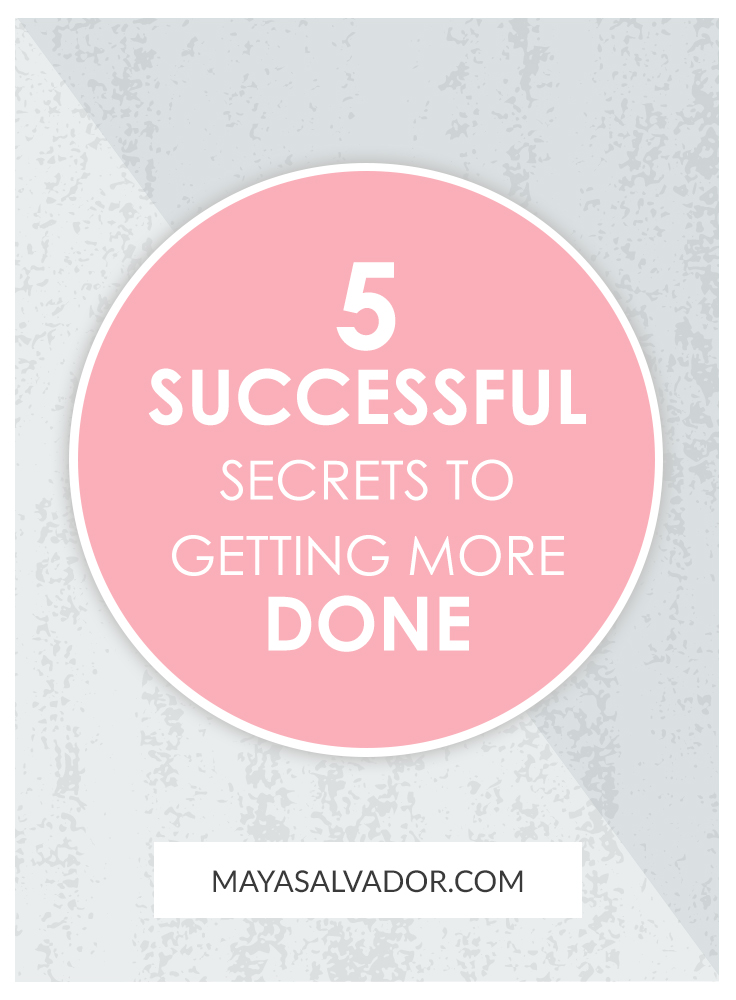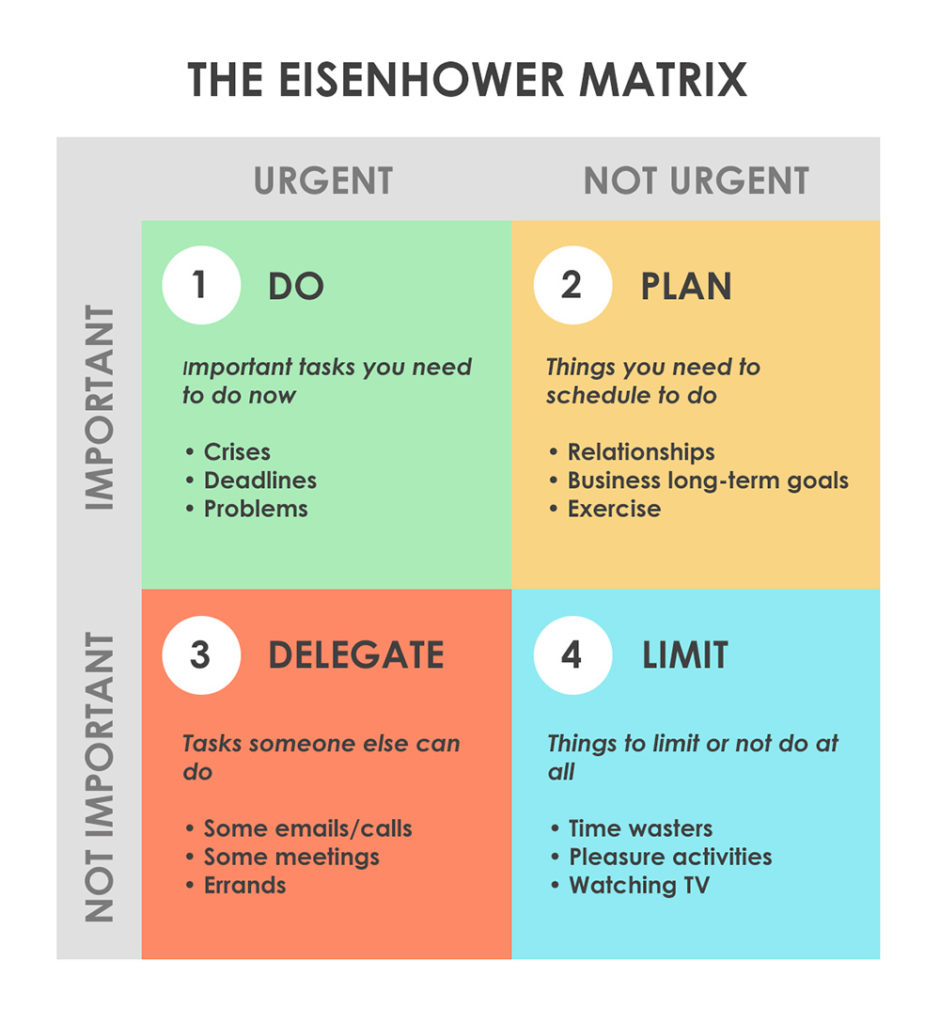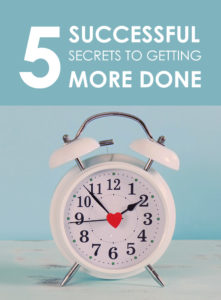
Getting more for less. It’s everybody’s goal, isn’t it? More quality for less money. Better results for less effort. Work smarter, not harder. Increase productivity and efficiency.
Having a family and multiple businesses, I needed to maximize my time and effort. I began to research time management and productivity. I’m going to tell you some of the best tips I learned from the leading experts in the field.
I also learned a lot from self-made millionaires and successful entrepreneurs. I found that many of them use one or more of these techniques. If they have the same hours in a day as I do, I wondered how I could achieve more.
Time management is a skill
Despite what advertisers would have you believe, getting more for less is actually possible. At least when it comes to productivity. And it requires nothing more than developing a valuable skill-set.
Take car mechanics, for example. Good negotiation skills are often the difference between a large bill and a less expensive one. Another example? How about tennis practice. A trained coach can put in place better training routines. And produce faster and more impressive results compared to a lesser-equipped rival.
But does the same principle work with getting more out of your time? Is better productivity nothing more than a skill-set?
You bet!
Getting started on the road to productivity
Before getting into the types of tips that will send your time management skills to a new level, it’s first important to learn the philosophy of efficiency.
You aren’t competing against time. You’re competing against yourself.
#1 – Parkinson’s Law explains it best
Cyril Parkinson, historian and author of Parkinson’s Law, stated, “work expands so as to fill the time available for its completion.”
The theory is that motivation and effort levels fluctuate based on the urgency of a project. Work that takes 3 hours may only take 2 if that was all the time that was available. Society rewards us for working harder, not efficiently.
When you have a smaller amount of time to complete a task, creative problem-solving tends to kick in. Since time is of the essence you will find ways to increase efficiency. Prioritizing and removing unnecessary tasks or items. Finding faster or more efficient ways of completing the task. You learn to edit and the art of brevity.
You may have experienced this law in effect several times in your life. In college, this was an all too frequent occurrence for me. Teachers gave assignments that I had the entire semester or a couple of weeks to work on. I remember many times cramming to complete entire projects in a weekend or even one night. It’s a bad habit. It’s stressful and sleep is important. Not to mention the quality of your work can be questionable. But you can use this law in a healthy and effective way with some planning.
Use Parkinson’s Law to improve your time management skills by:
- Setting shorter deadlines
- Stop working all night and all weekend. Set a time to stop each day (e.g. 4:00 pm) and track your progress. You may find that productivity increases when you aren’t lingering over a task.
- Cutting down the time suckers. Instead of spending 40 minutes on email, I cut it down to 20 minutes. You can also try this method on other tasks as well. Estimate the amount of time to complete a task and cut the time allowed by half. Your competitive spirit might work best with a beat the clock scenario.
- Changing your mindset to one which states that you will complete relevant tasks ASAP
- Using time allotments instead of task amounts. As a writer, I used to assign myself a goal of achieving 2000 words a day. That wasn’t working for me. So I changed it to writing an article by noon. I produce more writing this way and have the rest of my day free to do other things.
#2 – The 80-20 Rule
Otherwise known as Pareto’s Principle, the 80-20 rule is another key idea to get more done in less time.
The 80-20 rule states that 80% of all things are trivial, while only 20% are important. Economist, Vilfredo Pareto, discovered this as he studied the distribution of wealth in his native Italy. He realized that 20% of the population owned 80% of the country’s land.
Many professionals have noticed that this principle applies to their fields as well. Time management experts being just one of them. There are several best-selling books on the 80-20 rule. One is, Living the 80/20 Way: Work Less, Worry Less, Succeed More, Enjoy More by Richard Koch.
Laser focus on the 20%
Do you have clients or products that take up a lot of your time but don’t make up much of your revenue? You may have to niche your business with laser precision. Attract and focus on the clients or products that bring you the most income. Keep investing in the products or services that are in the 20%.
Delegate, delegate, delegate
For all you creatives, are you spending more time running your business than creating? Yes, you need to spend a lot of time running your business. But you also have to make time for creating and nurturing your products and services. Outsource if you can.
Use apps like FreshBooks to help with your financial tasks.
Another option is to hire a virtual assistant (VA) to assist with routine tasks.
Ask family members to help with home-related chores. This allows you to focus more on work that is helping to grow your business.
This last point resonates with me in particular. Even though there were several capable people to help out at home, it wasn’t happening. Every day that I spent several hours on housework, I could hear the sound of my business withering in a slow death. I wondered how many sales I was missing out on while I was folding towels with precision.
A clean and organized home is important to me, but at what cost? I learned to relax on perfection and delegate to others.
Be ruthless and slash away
Pare down. One example is social media marketing. When entrepreneurs start out, they tend to create every social media account in existence. That’s because that’s what everyone tells them to do. They sign up for Twitter, Facebook, LinkedIn, Instagram, Pinterest, Google+. And they quickly abandon them all due to the time and effort required. You can’t juggle all those balls.
I won’t underestimate the importance of social media. Marketing is key to your business. Start out by focusing on one or two channels to optimize their performance. Begin with the ones you are most comfortable with using and that you think will bring the most value. It’s better to focus and post with consistency on 1-2 marketing channels than to spread yourself thin on 5 or 6. Rock those like nobody’s business. And make sure you track and monitor your efforts to see what’s working and what isn’t.
And speaking of social media, the 80-20 rule applies here as well in another aspect. Make 20% of your posts about your business or brand. Leave the remaining 80% to interesting, shareable content.
Create content-rich posts by sharing stories, news items, quotes or beautiful photos. If you make it all about you, your audience will tune out. No one likes the bombardment of constant sales pitches. So focus on your audience and you will attract and engage your followers.
But…yes, there’s a BUT
Don’t get too hung up on numbers and percentages. The key point is to look at where you have an imbalance and adjust your focus.
Maybe you’re lacking sales because you haven’t put out any new products. You haven’t created any because you’re spending a lot of time organizing your finances. This may be a sign that you are avoiding something.
If it’s a necessary task but you don’t have time, then delegate. If it’s because you enjoy bookkeeping so much, maybe you need to shift your business niche.
The 80-20 rule will help you become more efficient. In a nutshell:
- Prioritize important tasks. Spend the most time on the 20% and the remaining time on the 80%.
- Set 1-3 VIP tasks each day that deserve your greatest time and attention, then focus on them.
- Delegate, or even abandon tasks which don’t pay high enough dividends.
- Remove distractions. Start with the biggest time-wasters.
- Save time and energy for what you do best.
#3 – The Power of Engagement
The Power of Full Engagement: Managing Energy, Not Time, Is the Key to High Performance and Personal Renewal, written by Jim Loehr and Tony Schwartz, offers a different view on efficiency.
The hours available on any given day is fixed. While you can’t change this, the amount of energy and the quality of effort that you give are limitless. Focused energy is a more valuable resource than time. It’s like sprinting. Dedicate an equal amount of time to intense energy and to rest. This ties in with the Pomodoro Technique, which I will get into in point five.
As research shows, it’s becoming clear that scattered energy is the enemy of productivity. The push to multi-task has to end.
According to recent studies, multi-tasking does not increase productivity. It actually reduces your efficiency and performance. Even worse, when we force our brains to multitask, it causes damage. Our brains weren’t designed to focus on more than one task at a time. There is also a connection between engaging in simultaneous activities and depression and anxiety.
The mind + body connection is not a new concept, yet we often tend to ignore it. You are not reaching your maximum potential if you are under stress, not sleeping enough, or eating well. Self-care is vital. It’s so important that I will be dedicating an entire post to self-care in the future.
Some valuable points the authors share are:
- Spend time teaching yourself to focus with intent on the work you’re doing
- Dedicate a certain time to intense work, and a certain to fulfilling rest. Balance is key.
- Full engagement requires your emotions, mind, body, and spirit. Take time to nurture all of them.
- Think of projects in terms of energy needed, rather than time required
- Stop multi-tasking, start focusing
- Seek to find ways which promote energy renewal
#4 – The Eisenhower Matrix
The Eisenhower Matrix is a decision-making tool created by former U.S. President, Dwight D. Eisenhower. It prioritizes tasks by level of importance and urgency.
The matrix consists of four quadrants (see image below):
- Important & Urgent (do first)
- Important & Not Urgent (schedule)
- Unimportant & Urgent (delegate)
- Unimportant & Not Urgent (don’t do)

Importance vs urgency
So what is important and what is urgent? Urgent items demand our immediate attention. These can include urgent phone calls, emails or a broken fridge. Important items fit into our long-term goals or vision. These include spending time with family or exercising to be fit.
Using this grid, start to place your tasks according to the criteria of each quadrant. This will help you identify which tasks demand your immediate attention. Planning out your tasks this way is also a great way to stop any bad habits (e.g. too much Facebook time).
The Eisenhower Matrix was popularized by Stephen Covey in his best-selling book, The 7 Habits of Highly Effective People.
Some more points to consider are:
- Combine your business and personal tasks. When you have different track sheets it can be overwhelming and you could miss something.
- Limit the number of tasks in each quadrant (6-8). Don’t add a new one unless you have completed one.
- Create the matrix that works best for you. Use a daily grid, weekly or both.
#5 – Pomodoro Technique
Francesco Cirillo created the Pomodoro Technique in the 1980s while he was in university. It’s a time management tool that breaks tasks into 25-minute chunks. Short breaks separate each of these chunks of time. These intervals called a “pomodoro,” means, “tomato,” in Italian. It comes from the tomato kitchen timer Cirillo used when he developed the technique.
Getting started
It’s a simple time management technique that you can start immediately. All you need is a timer, paper, and a pencil. Planning is the first step. Write down a list of tasks and estimate the time needed to complete each one. List them in order of importance.
Use another sheet to track and record your progress. The goal is to reduce the effect of interruptions. Work on as many pomodoros as it takes to complete the task.
Pomodoro Technique Step by Step:
- Write down a prioritized list of tasks. Decide on a task
- Set the Pomodoro (timer) to 25 minutes
- Work on the task until the timer rings (if a distraction comes up, make a note of it)
- Put down a checkmark for completing a pomodoro
- Take a Short Break (5 minutes)
- Every four “pomodoros,” take a Long Break (20-30 minutes)
Why does it work?
The Pomodoro method ties in well with Parkinson’s Law mentioned in point one. It works as a systematic approach to tackling your to-do list. By structuring your time into bite-sized chunks, completing tasks is less overwhelming.
Breaks and checkmarks serve as rewards for your accomplishments. Tracking progress helps you detect and fix any problem areas. It also improves your ability to estimate the time for tasks.
Further Tips:
- A pomodoro is indivisible. If your task is shorter than a pomodoro, combine it with another task. If your task is longer than 5-7 pomodoros, break down the task further.
- Do not pause or restart a pomodoro. Most interruptions can wait for 25 minutes. If an interruption is unavoidable, cancel the pomodoro. Start over on a new one when you return.
- The keys to its effectiveness are Planning – Tracking – Recording. Do not skip these steps.
- Logging your distractions will give you some insight into problem areas. What are the biggest distractions? Can they wait? What is the best time of day for uninterrupted work? Through observation, you can work toward increasing your productivity
Tools for using the Pomodoro Technique:
Choose the timer that’s right for you. You can use physical ones, apps, online or desktop-based timers. You only need some paper and a pencil for tracking. But if you choose to go high tech, you can use a spreadsheet or an app.
Tomato Timer – A web-based Pomodoro Technique timer which also has desktop alerts.
PomoDone – You can use PomoDone on its own or with your fave tools such as Trello, Wunderlist, Asana, and Todoist. I use this app and have it connected to my Trello account.
Kitchen Tomato Timer – A more affordable version of the Pomodoro timer. Twist to set; goes up to 60 minutes.
Miracle Cube Timer – simple timer that is set by setting it on its side. Each side has increments of time (the white one has 5, 15, 30, 60). Be warned, this one has a very loud alarm.
Visit the official Pomodoro Technique website for further information.
Putting everything together
I hope these ideas will help you to view time management in a more effective way.
You can also maximize efficiency with some additional tips:
- Learn to say ‘No.’
- Automate everything. Everything that is possible to automate, automate it!
- Don’t waste time on energy drainers like social media
- Handle emails in the morning and stop obsessively checking your email
- Spend only 20 minutes writing and prioritizing your to-do list
For more solutions to getting more done, read, The 4-Hour Workweek, Expanded and Updated, by Tim Ferriss.
Put some of these productivity tools to the test and see what works best for you.
Have you tried any of these time management hacks? What works for you? Let me know in the comments!








